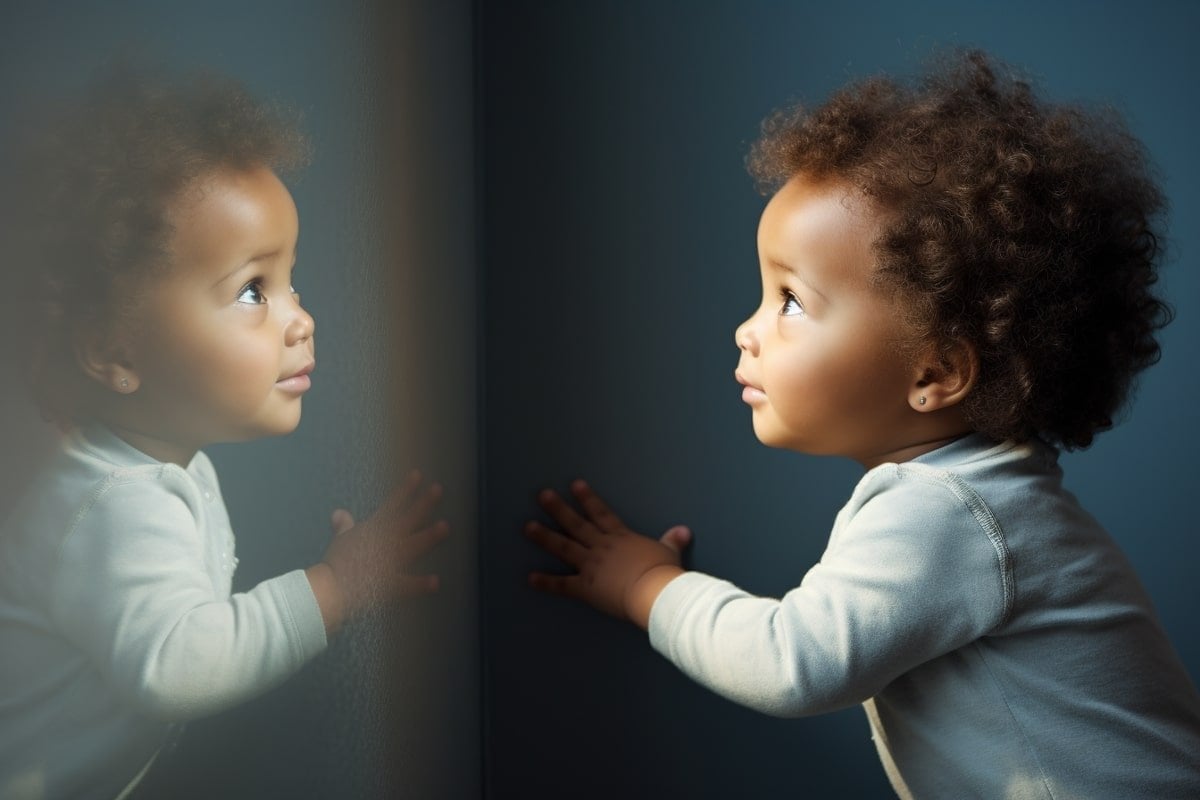Summary: Babies tend to trust other people’s observations more than their own.
Studying infants aged 8 and 12 months, the researchers found that the younger infants prioritized the animated character’s attention over their own in tracking the location of objects. However, at 12 months of age, children are showing signs of transition to trusting their own observations more.
This “altercentric bias” may facilitate learning during a time when infants’ ability to interact with the environment is limited.
Key facts:
- Younger babies (8 months) display an “alternative bias”, which prioritizes the attention of animated characters over their own observations when tracking the location of objects.
- By 12 months, infants are showing signs of transition to trusting their own observations, indicating a receding altercentric bias.
- The researchers suggest that this infancy bias may serve to facilitate learning when infants’ ability to interact physically with the environment is limited.
Source: University of Copenhagen
Children are often seen as egocentric—and not without good reason. For example, it is well documented that 3 year olds only use their own perspective when predicting the actions of others.
Adults also find it difficult to ignore them when empathizing with others. Our egocentric tendencies continue throughout our lives.

However, the story is different when it comes to babies. This was demonstrated in a new research project from the University of Copenhagen, in which researchers have studied the ability of 8 and 12 month old babies to remember the location of moving objects.
The aim of this project is to test the theory that early childhood has something called altercentric bias:
Babies trust other people’s observations more than their own. The study entitled “An initial but receding altercentric bias in preverbal infant’ memory” has been published in the journal Proceedings of the Royal Society B.
Following the attention of others
First, the researchers investigated whether babies as young as 8 months could remember the location of an object if it was moved from one hidden location to another. To do this, the researchers used animations showing a conveyor belt or hand moving a ball behind one screen and then behind another.
“When we later revealed one of the locations as empty, the kids took a longer look at where the ball should have been. This shows us that children have memories of where objects were moved,” said Velisar Manea, a postdoctoral fellow in the Department of Psychology, who led the research project.
To investigate how other people’s attention affects babies’ memory, the researchers then conducted an experiment in which an animated human character also followed the movement of a ball.
“When the ball is transported to its first location, an animated character looks at the ball. Then we cover the character and the baby is left alone to watch the movement of the ball to the second location,” explained Manea.
“As expected, babies expected to see the ball in the first location, even though they saw it moved to the second location. They prioritized the animation agents’ attention to what they saw afterward.”
The research team conducted a control experiment in which an animated agent followed the location of the ball from start to finish.
“To our surprise, the infants looked the same at both locations revealed in this experiment. Again, an 8-month-old may expect balls in both locations, as agents attend to both,” said Manea.
Self-confidence grows
But when does the child begin to trust his own observations? The research team investigated this question by conducting a similar experiment with 12-month-old children.
“In contrast to children aged 8 months, children aged 12 months were able to remember the last position of the ball in the experiment, where the agent also saw the final location,” said Manea.
Conversely, when the agents only saw the ball in the first hiding location, but the babies saw only moving to the last location, they looked equally at both places.
“This shows that 12-month-old children are in a transitional phase, where some babies are less affected by other people’s perspectives, while others are still very much affected,” said Manea.
So why is a baby’s memory built to rely more initially on observing those around him—and then to become more independent?
“We think that altercentric bias facilitates a child’s learning at a unique time in life when motor immaturity limits infants’ interactions with the environment,” suggested Manea.
About this neurodevelopmental research news
Author: Velisar Manea
Source: University of Copenhagen
Contact: Velisar Manea – University of Copenhagen
Picture: The image is credited to Neuroscience News
Original Research: Open access.
“Initial but receding altercentric bias in preverbal infant memory” by Velisar Manea et al. Proceedings of the Royal Society B: Biological Sciences
Abstract
Altercentric bias early but recedes in preverbal infant memory
Young learners are likely to face the daunting challenge of choosing what to attend to, a problem that may have been exacerbated in human infants by changes in carrying practices during human evolution.
A new theory proposes that human infant cognition has an altercentric bias whereby early in life, infants prioritize encoding events as targets for the attention of others.
We tested this bias by asking whether, when the infant and the observing agent had conflicting perspectives about object location, the location witnessed together was more remembered. We found that 8- but not 12-month-olds expected the object to be in the location where the agent saw it.
These findings suggest that in the first year of life, infants can prioritize coding events attended by others, although this can sometimes lead to memory errors. However, the disappearance of this bias at 12 months suggests that altercentricism is a feature of very early cognition.
We propose that it facilitates learning at a unique stage in life history when motor immaturity limits infants’ interactions with the environment; At this stage, observing others maximizes the information selection process.
#Trusting #Babies #Unusual #Bias #Observation #Neuroscience #News